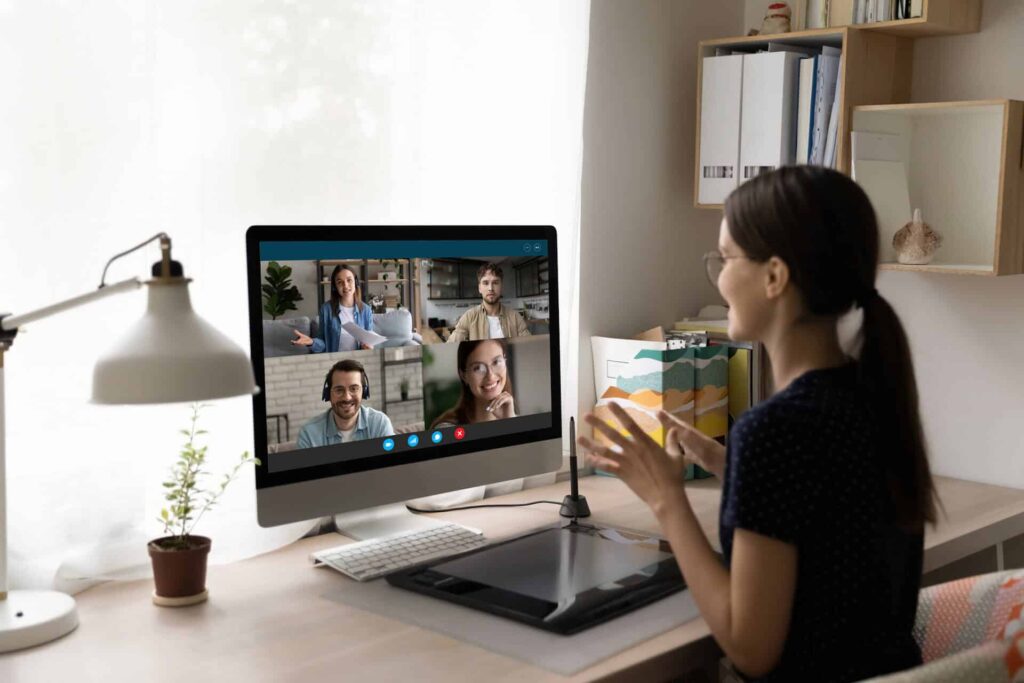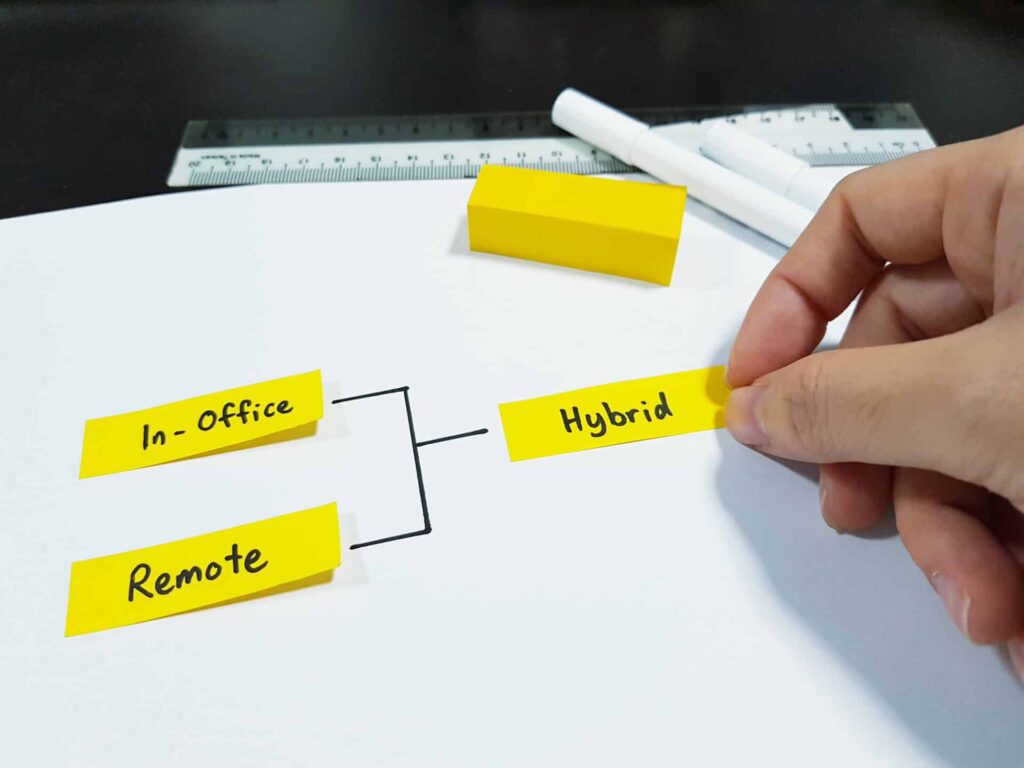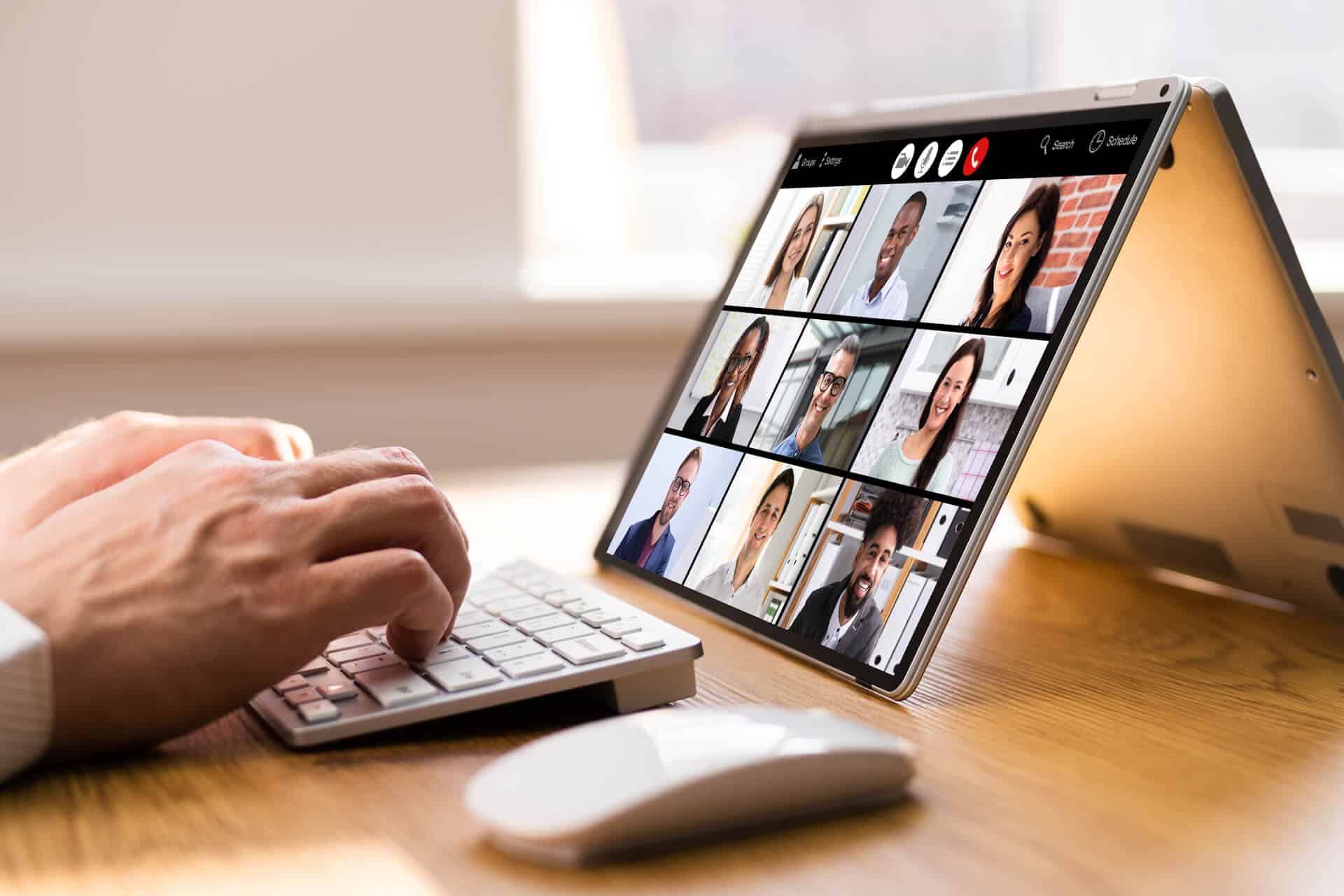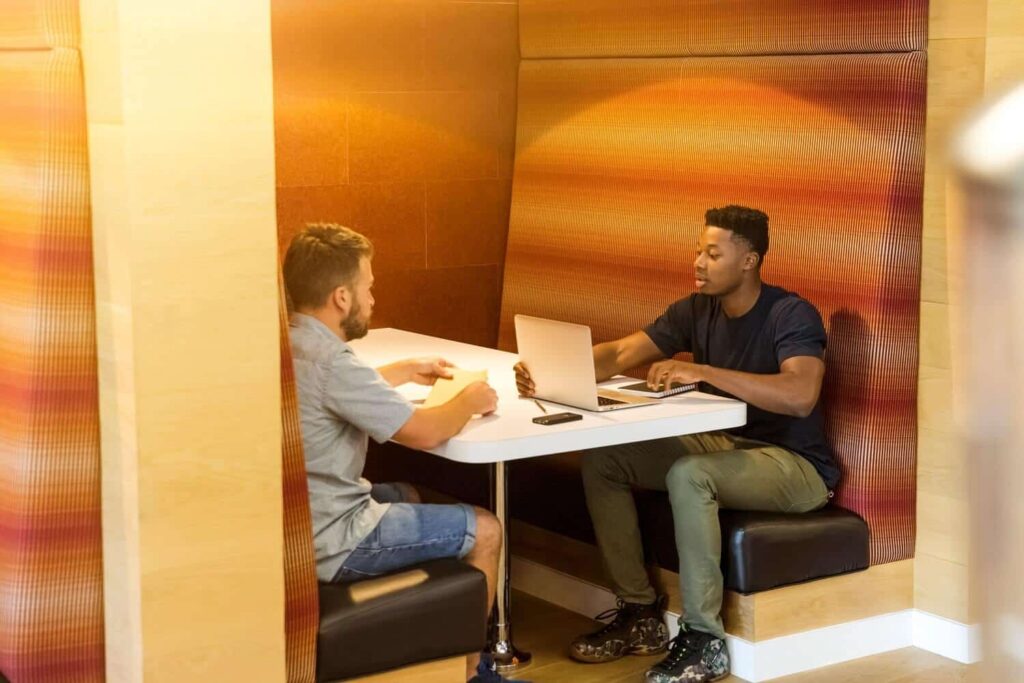There are many hybrid workplace examples that companies can look to as they return to the office. Given the many benefits of hybrid work, it makes sense to carefully analyze hybrid model pros and cons. This will provide insight in order to figure out the best fit for both company culture and company needs.
More and more workers are clamoring for more flexible work options. Smart companies are trying to figure out how to create a hybrid work environment that benefits everyone on the team.
In this article, we explore hybrid workplace examples that can help light the way towards a more forward-looking work arrangement.

Understanding the hybrid workplace
As we all know post-pandemic, the hybrid workplace is where employees can work both remotely in different locations or onsite. Or, in any combination thereof. Hybrid work schedules can vary widely across companies. As long as the focus stays on what employees want, the hybrid workplace experience can be a very positive one.
Specifically, there are four hybrid work models which companies can use to shape their future of work:
- The traditionalist model, best suited for companies with office workers that either are forced to or choose to remain office-centric full-time, while still bringing in a much flexible working and digital workplace solutions as possible
- The architect model, for hybrid companies that are primarily focused on creating a work policy that helps them maximize or reduce their real estate portfolio
- The nomad model, for companies that place the focus on work-life balance and letting their team members drive their plans for the hybrid office
- The pioneer model, for the companies able to most enthusiastically embrace hybrid work by letting their employees choose when, where, and how they work—and maybe forgoing the physical office entirely, allowing for fully remote teams.
Finding the right hybrid workplace model
Even though hybrid office work was on the rise even pre-pandemic, it’s still a relatively new workplace model. That means there will ultimately be some trial-and-error as companies try to find the right workplace strategy for their needs. This is why workplace strategist Angie Earlywine, Senior Director in the Total Workplace division of Global Occupier Services at Cushman & Wakefield, recommends regularly conducting employee surveys and focus groups to get on-the-ground feedback, and then adjusting based on that feedback.
“If I invest in technology or space, or if I reduce real estate because I don’t think we need as much, all of that is a potential risk with significant costs associated,” she says. “The antidote to figuring out how to reduce risk is in ensuring you’re aligned with employee sentiment and the company’s vision for supporting a hybrid work environment.”
For this reason, it’s often a good idea to bring human resources, along with IT and facility managers (FMs) into any efforts to restructure the workplace.
Ultimately, since the hybrid workplace and the employee experience are intimately linked, companies should seek out examples of hybrid work that lead to happier and healthier workspaces.

5 Hybrid workplace examples
Going hybrid requires thoughtful planning and consideration. Many companies are still in their early stages in which learning and discovery are key. The following 5 hybrid office cultures are examples of those who are navigating the transition well.
1. eduMe are true workplace pioneers
The team at eduMe, a mobile-based training platform, provides a wonderful example of embracing the pioneer working style. They let their people work from wherever they work best. They also provide them both freedom of choice, and the right hybrid working tools to make that freedom work.
This dovetails with Earlywine’s focus on trusting employees.
“Trust has to be the foundation for the workplace strategy,” she says. “Provide the entrée of options, the buffet of workplace choices, and trust your people to go where their best work will be enabled. If you can provide that variety, throughout your floor and throughout your building, that’s where you really start to foster game-changing productivity and innovation.”
This looks like providing all their co-workers with the freedom, equipment, trust and support they need to be their best working selves. This is whether they’re working from home, remotely, or in the office.
This includes equipping all new workers with a generous work from home (WFH) budget. This helps to establish an ideal home working environment.
It also includes creating policies that encourage employees to take off. This can be for rest, travel, and to attend to their personal lives.
Removing the constraints of set working hours and trusting employees to do their best work has ultimately created a happy and productive workspace.
We have to trust and empower our people to make the right decision. And they will rise to the occasion.
Angie Earlywine
2. How Cactus Communications is helping employees transition to remote work
India-based technology company Cactus Communications is one of many companies that were forced into remote work because of the pandemic. They are now sticking with it because of employee sentiment.
Prior to the pandemic, the company was strictly office-based, and employees enjoyed coming to the office each day. When they had to abandon their office space due to the pandemic, the team quickly realized they enjoyed remote work, too. The company has also reaped the benefits of being able to recruit talent from a global talent pool. They have found that their new hybrid workplace is helping improve talent retention as well.
Presently, Cactus Communications is an example of how a company can use hybrid work to transition its culture into the future while also creating equal footing for all employees to contribute and collaborate.
Companies are trying to strike a balance between getting flexibility that works for their business model, and allowing for collaboration, camaraderie, and team building for their employees.
Luke Anderson, VP of Product and Strategy
3. A nomad workspace helps 10Pearls prioritize employee wellbeing
An interesting hybrid workplace example comes from 10Pearls. They’re a digital development company that switched to remote work in January 2020, before the pandemic. This turned out to be an unwittingly prescient experiment.
The company stuck to their new remote model until October 2020. At that time, many remote workers expressed the desire to return to the office.
Even after reopening the office, 10Pearl’s leadership continued to encourage workers to consider the outside risks of COVID-19 before choosing to return. If someone felt sick—even with mild symptoms—the official policy was to stay home for as long as needed. Note: a tool like Safeguard can make it much easier to ensure that all office employees are health-compliant.
After reopening their office to hybrid work, the company noticed an improvement in productivity, communications, teamwork, and engagement. Currently, this hybrid work model extends across 1,400 people, spread across 7 countries and multiple time zones.
4. Gibson Hill balances face time with remote work
Gibson Hill, a personal injury attorney office in Houston, uses a blend of hybrid workplace technology to make the right hybrid workplace for their teams.
Their business requires frequent in-person contact with clients, because face-to-face conversations are important, especially for sensitive topics related to injury. Due to this necessity, the company’s preference is for everyone to be on site. Regardless, human needs are their priority.
That’s why the team has also recognized the value in hybrid meetings and in performing certain tasks online and remotely. The leadership team is also able to accommodate requests to work from home and/or comply with COVID-19 restrictions. This is on a case-by-case basis.
5. Employees at eMazzanti Technologies are inventing their own ideal workspace
IT consulting firm eMazzanti Technologies is an example of a pioneer hybrid office. They encourage employees to invent their own ideal workplace. Everyone has the option to choose where they work. Many remote employees only come to the physical office when they need access to key shared resources.
In the office, eMazzanti gives people the option to choose from a variety of flexible seating options. People come and go as they please, with no set workday hours or mandates to be present in the office.
Like most companies, eMazzanti used to have traditional offices for specific roles and levels within the company. But today, the company uses a free addressing system where all desks and meeting rooms are open to everyone. Even the CEO’s former office is now up for grabs each day.
Today, employees don’t have to just go to the office because they have to. They go because there’s something they’re trying to accomplish. Whether that’s collaboration with another team or within their team, planning, reviews, brainstorming and similar activities.
OfficeSpace CEO David Cocchiara
This hybrid workplace example is also an example of creating more empowerment in the workplace. The eMazzanti leadership team listens to employees and allows them to drive the direction of their work in real time. This empowerment is more than just a perk. It’s proven crucial for earning trust and loyalty in a tight tech labor market, helping the company to better ride out the Great Resignation.

What is the difference between a traditional and a hybrid workplace?
On the surface, the difference between a traditional and a hybrid workplace is simply about where employees work. Are they commuting to an office everyday or are they working from a variety of locations?
At a deeper level, the difference is about trusting employees. It’s also about giving them the space and resources they need to make their best work happen. Finally, it’s about embracing the benefits of working remotely, while recognizing that there are some key ingredients to good work—collaboration, mentoring, sharing a joke around the water cooler—that can’t quite be perfectly replicated with Slack and Microsoft Teams.
In short, hybrid companies ask themselves ‘what does it mean to be flexible at work?’, and then they take the steps necessary to get there.
OfficeSpace can help streamline any variety of hybrid workplace examples. Reach out for a free demo.
Photos: AndreyPopov, fizkes, celiaosk, Parabol




